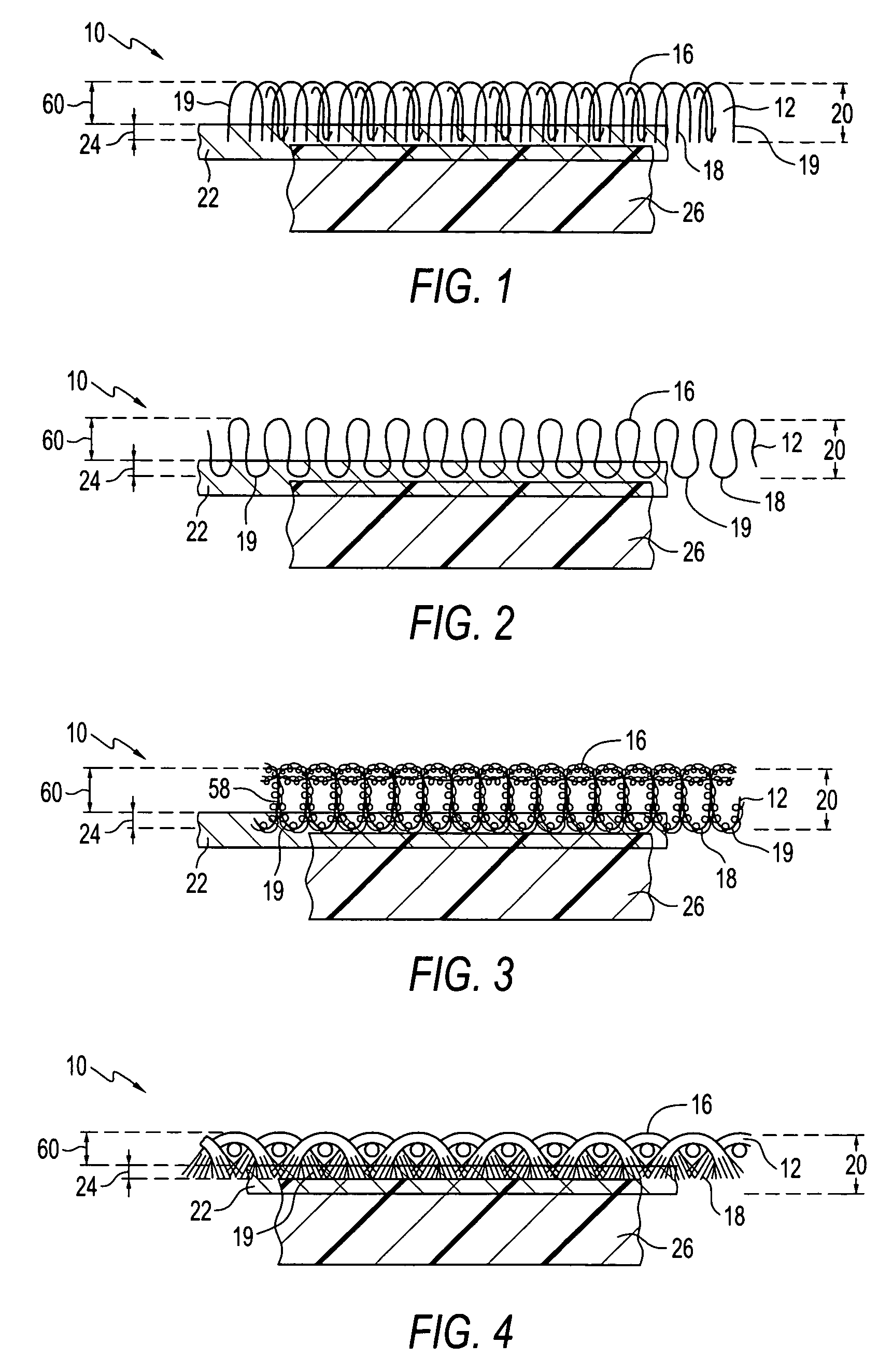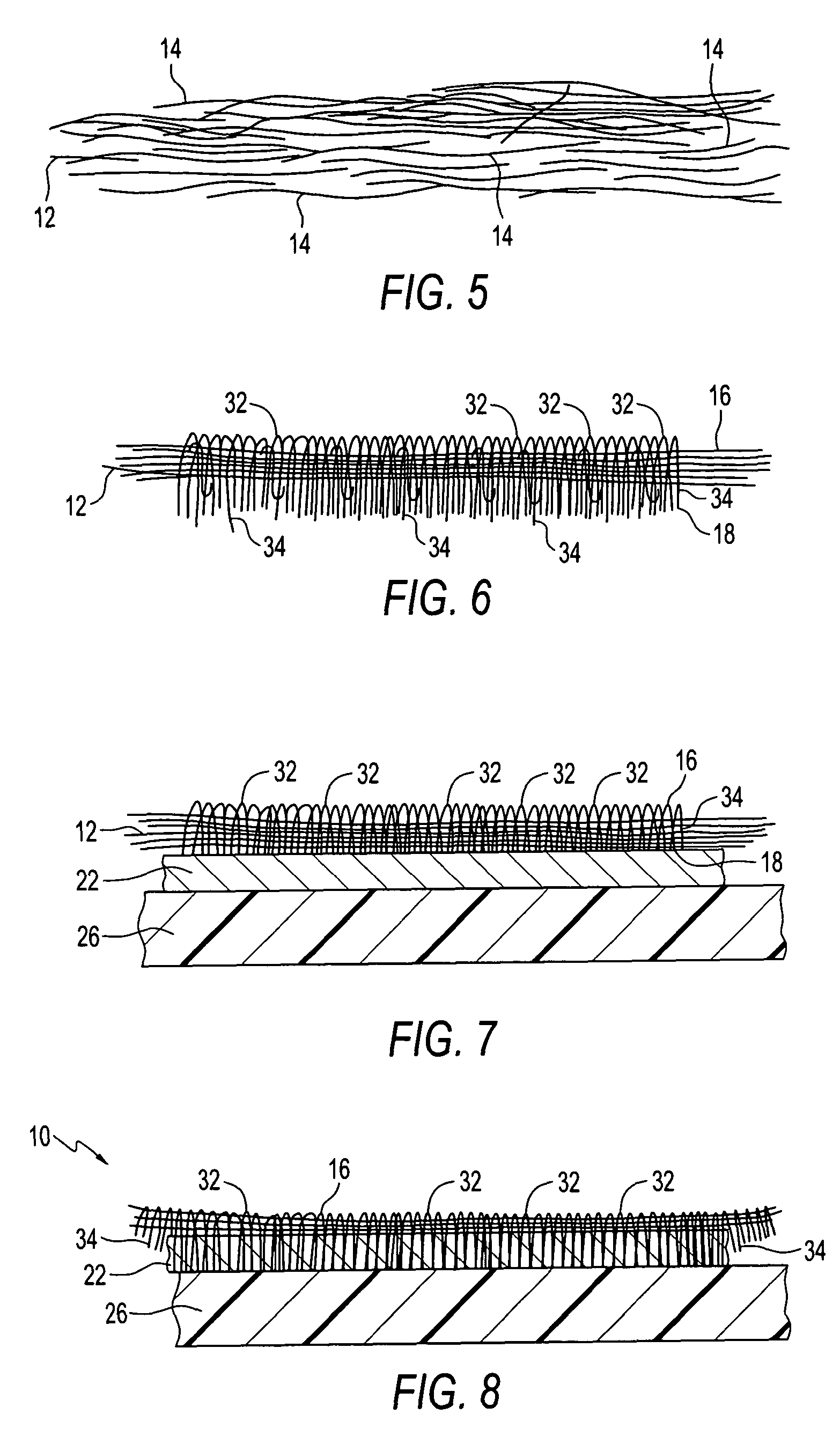Fabric-faced composites and methods for making same
a technology of fabric-faced composites and composites, applied in the field of fabric-faced composites and methods for making same, can solve the problems of affecting the durability of textile products, and affecting the quality of fabric-faced composites, so as to achieve the desired level of surface stability, improve the effect of surface stability and resist the effect of cutting edge fraying
- Summary
- Abstract
- Description
- Claims
- Application Information
AI Technical Summary
Benefits of technology
Problems solved by technology
Method used
Image
Examples
example 1
[0078] A blend of 80% 1.5 denier 1.5 inch polyester fibers and 20% 1.5 denier 1.5 inch polypropylene fibers is carded and lapped into a structure weighing approximately 8 oz / sq.yd. This face layer is then needled from one side only with 1,500 penetrations / sq.in. forming a dense surface and a very fur-like backface with many free ends and loops, as shown in FIG. 6.
[0079] A second blend of 80% 15 denier, 1.5 inch cut polyester and 20% 1.5 denier 1.5 cut polypropylene fiber is carded and lapped into a 24 oz / sq.yd. batt and needled with 300 penetrations per square inch from one face to form the backing layer.
[0080] A dual layer of 0.05 inch thick polyethylene utility films is placed between the face layer and the backing layer, with the needled sides of the face layer and the backing on the outside and pressed with a plate heated to about 200 degrees C. placed against the face layer, at 1000 psi for 3 seconds. The plate facing the backing is at room temperature. The product is solidly...
example 2
[0081] The face layer of Example 1 is needled into the adhesive layer before laminating onto the backing layer. The stability of the surface is superior to Example 1. Delamination without destroying the layers is even more difficult. The surface is fibrous, smooth, free of adhesive and traffic-wear and edge-fraying resistant. The fibrous height above the adhesive penetration is approximately 0.9 mm.
example 3
[0082] The needled face layer of Examples 1 and 2 is needled directly through the dual adhesive layer and into the backing (FIG. 12) before the hot pressing process. The product has a textile feel and excellent durability and is delamination resistant.
PUM
| Property | Measurement | Unit |
|---|---|---|
| thickness | aaaaa | aaaaa |
| height | aaaaa | aaaaa |
| height | aaaaa | aaaaa |
Abstract
Description
Claims
Application Information
 Login to View More
Login to View More - R&D
- Intellectual Property
- Life Sciences
- Materials
- Tech Scout
- Unparalleled Data Quality
- Higher Quality Content
- 60% Fewer Hallucinations
Browse by: Latest US Patents, China's latest patents, Technical Efficacy Thesaurus, Application Domain, Technology Topic, Popular Technical Reports.
© 2025 PatSnap. All rights reserved.Legal|Privacy policy|Modern Slavery Act Transparency Statement|Sitemap|About US| Contact US: help@patsnap.com



